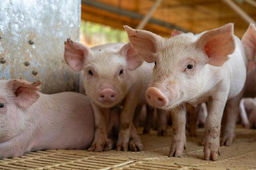Improving Poultry Husbandry and Welfare: Essential Components for Sustainability
Published in Agricultural & Food Science and Zoology & Veterinary Science

Poultry farming is an important production sector providing essential protein through meat and egg production. Intensive agricultural techniques have generated much apprehension about animal welfare and environmental sustainability. The "Improving Poultry Husbandry and Welfare" collection in Poultry Science and Management addresses these problems by focusing on three key aspects: population density, interior design, and the condition of the skeletal system. These characteristics are crucial for the welfare and production of chickens.
Population Density and Welfare
Overpopulation in industrial poultry operations is an important issue, resulting in increased stress, aggressiveness, and raised ammonia levels, which negatively impact their respiratory systems. Studies indicates that elevated stocking densities limit mobility and increase negative behaviors like as feather pecking. Research indicates that reducing stocking density can markedly enhance welfare without detracting from output. For example, broilers exhibited best results at densities of 30 kg/m² or lower, but laying hens require a minimum of 750 cm² per bird. Free-range systems, particularly, showed lower mortality rates and better feather quality. In the future, alternate housing solutions and computerized monitoring techniques may enhance space utilization while safeguarding avian wellbeing.
Building Design for Better Welfare
Enriching poultry shelters according to their nature makes an important contribution to maintaining environmental conditions that support the health and productivity of poultry. Proper ventilation is important to reduce heat stress and prevent ammonia accumulation. Adjustable wavelength lighting systems have been shown to improve growth rates and reduce aggression between birds. Additionally, the use of perches and other enrichment materials can help decrease the incidence of bone fractures, which are a common issue among laying hens. Innovative designs such as tunnel-ventilated houses and dark incubators provide effective solutions to improve living conditions and reduce stress in poultry.
Bone Health: A Critical Welfare Concern
Bone health is an important issue for fast-growing broiler chickens, and especially for laying hens. Osteoporosis affects a significant portion of cage-raised chickens, increasing fracture rates to as high as 85%. Due to their accelerated growth rate, broiler chickens frequently exhibit leg disorders. Solving these problems requires a multifaceted approach, including nutritional strategies such as calcium and vitamin D3 supplementation, selection for stronger bones, and provision of free-range housing to increase bone density. These measures increase welfare and contribute to the sustainability of poultry farming.
A Path Forward
The collection “Improving Poultry Husbandry and Welfare” highlights the importance of evidence-based reforms in poultry farming. By targeting important issues such as avian population density, architectural design of housing, and bone wellness, the poultry business may enhance animal welfare, improve product quality, and promote sustainability. Collaboration between researchers, farmers, and policymakers will be important to implement improvements in the poultry field and align poultry production with global welfare standards.
We encourage researchers to contribute to this collection and participate in discussions within the Springer Nature Research Communities to further the field of poultry science. Together, we can work towards a future where poultry farming is both ethical and productive.
“Improving Poultry Husbandry and Welfare” is led by Afşin Kocakaya, Ankara University, and Nicole Kemper, Veterinary University of Hannover. The collection accepts original research, reviews, methodologies and commentaries. As a new open access journal, we are able to cover the article processing charges for publications.
Afşin Kocakaya, DVM, PhD, Ankara University, Turkey
Afşin Kocakaya received a Ph.D. in Animal Science and a Veterinary Medical degree from Ankara University. His dissertation investigated how hormones influence the reproduction of Akkaraman sheep, a native of Türkiye. Animal welfare in poultry and sheep, reproduction in poultry, sheep, and equines, and genomic research involving various species are his primary areas of study. His current research focuses on phenotyping livestock.
Professor Nicole Kemper, PhD, Veterinary University of Hannover, Germany
Nicole Kemper is the director of the Institute for Animal Hygiene, Animal Welfare and Farm Animal Behaviour at the Veterinary University of Hannover since 2013. Since 2021, she is also leading the WING (Science and Innovation for Sustainable Poultry Farming) at TiHo. Nicole is an internationally recognized expert in farm animal hygiene, behaviour and welfare, with more than 240 scientific publications, often with applied, practical impact, in international peer reviewed journals.
Published on behalf of Afşin Kocakaya.
Follow the Topic
-
Poultry Science and Management

This is an open access peer-reviewed journal that aims to publish innovative research about the management of poultry animals for both meat and eggs, the production of poultry products and the related food security considerations.






Please sign in or register for FREE
If you are a registered user on Research Communities by Springer Nature, please sign in